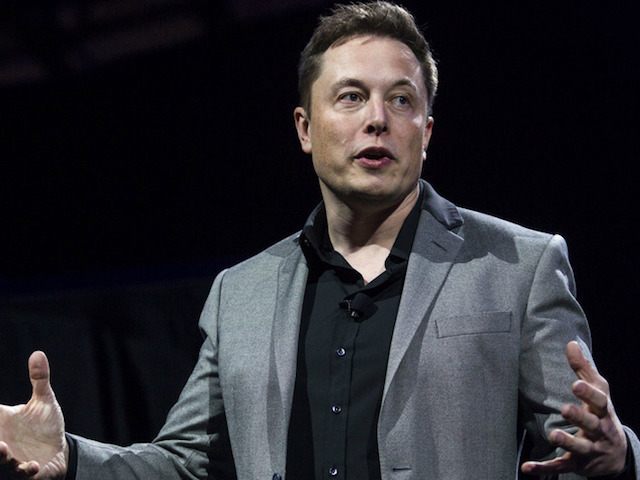SpaceX CEO Elon Musk unveiled his plan for “bold moves by private enterprise” to colonize Mars, beginning in 2022, at his keynote speech this week for the 67th International Astronautical Congress in Guadalajara, Mexico.
Breitbart News reported in “Making Humans a Multiplanetary Species” that Musk had told the high-tech Code Conference in June 2016 that when he first established Space Exploration Technologies Corp. (SpaceX) in 2002, the prime mission of the company was to colonize Mars. He replied to conference doubters that he could do it: “That’s the game plan — approximately 2024 to launch the first of the Mars colonial transport systems with people.”
Musk began his September 26 keynote address to the International Astronautical Congress by reminding the conference audience — including the world’s top rocket, satellite and military planners — that he was serious when he famously had said, “I’d like to die on Mars, just not on impact.”
Musk revealed that SpaceX is designing a powerful new rocket system called the Interplanetary Transport System (ITS) to accelerate his Mars landing. SpaceX plans first to launch an empty Mars vehicle into an Earth orbit in 2022, then refuel and stock it with supplies over the span of multiple follow-on launches between Earth and the orbiting rocket.
Once resupplied, ITS boasters will power the now manned vehicle on a course to Mars that will take between 80 to 160 days, according to Stratfor Global Intelligence.
The radically disruptive innovation is SpaceX’s plan that after its vehicle lands and colonizes Mars, the crew will produce, among other things, the rocket propellant to make the return journey back to Earth.
The ITS rocket will have a lift capability of putting 610 tons of payload into low-earth orbit, about 30 times SpaceX’s current Falcon 9 rocket, which has a capacity of only 26 tons, and 10 times SpaceX’s Falcon Heavy rocket, which is set to fly in 2017.
Musk acknowledged that the most conservative estimates put the price of his Mars mission at $10 billion per person. Given that at least 100 people could travel in each ITS mission, that equates to what has been a prohibitive $1 trillion price tag to go to Mars.
But Musk emphasized four innovative features of the SpaceX scheme: the reusability of ITS boosters and refueling tanks; refueling in orbit; producing propellant on Mars; and plans to use a more optimal propellant like super-cooled methane. Collectively, Musk believes these four features could push costs as low as $200,000 per person, or about $20 billion for the mission.
Prior to Musk’s keynote speech, funding a Mars mission had been considered the most daunting challenge in space due to its requirement of scaling up the project’s massive resource needs on SpaceX’s own profits and financing platforms like Kickstarter.
But with Musk promising to rely on participation from the private sector to colonize Mars, Musk may have just kicked off the greatest land rush since the 1862 Pacific Railroad Act, which chartered the Central Pacific and the Union Pacific Railroad Companies to build a transcontinental railroad linking the United States from east to west within 25 years.
Tthe rail project was completed in 7 years as the companies raced, building track to capture the greatest amount of 10-mile alternating sections of real estate along all the railway they completed. As a measure of the spectacular economic stimulus of the Transcontinental Railroad, the cost of cross-country travel dropped from $1,000 prior to the completion in Promontory, Utah on May 10, 1969, to just $150 dollars.
Although the wonder of space travel was the focus of Musk’s presentation to the international scientists, business and military analysts instantly recognized that if SpaceX succeeds, the United States will be positioned to gain solar system economic and militarily omnipotence for at least the next 30 years.

COMMENTS
Please let us know if you're having issues with commenting.